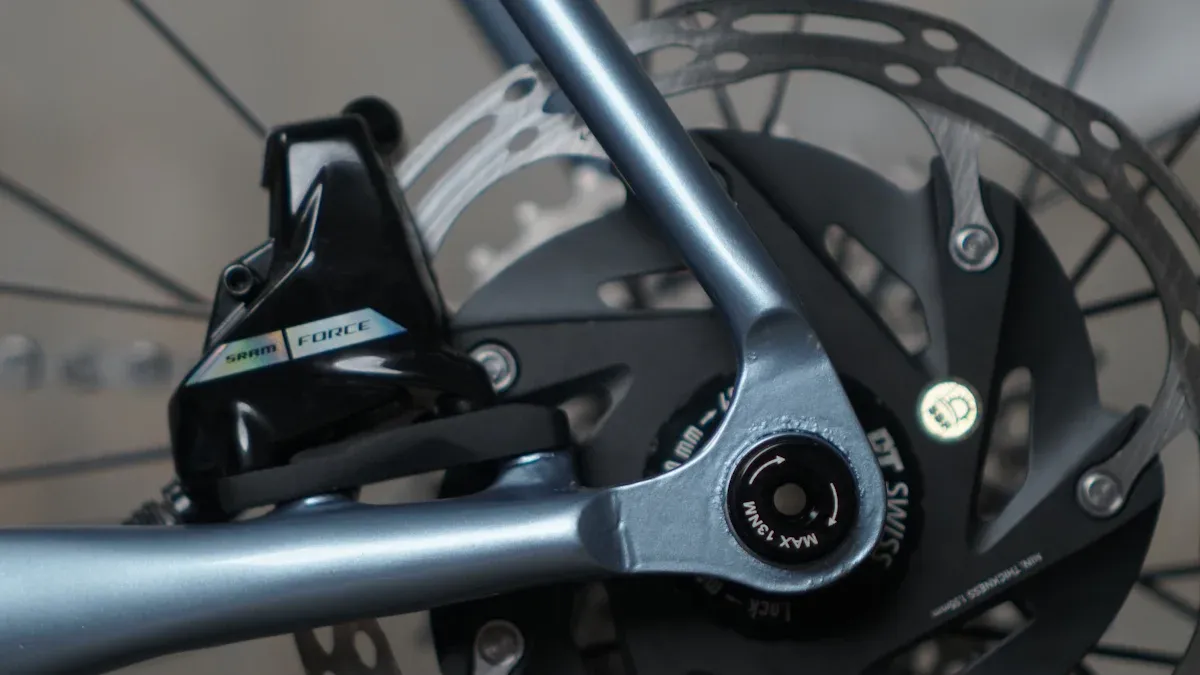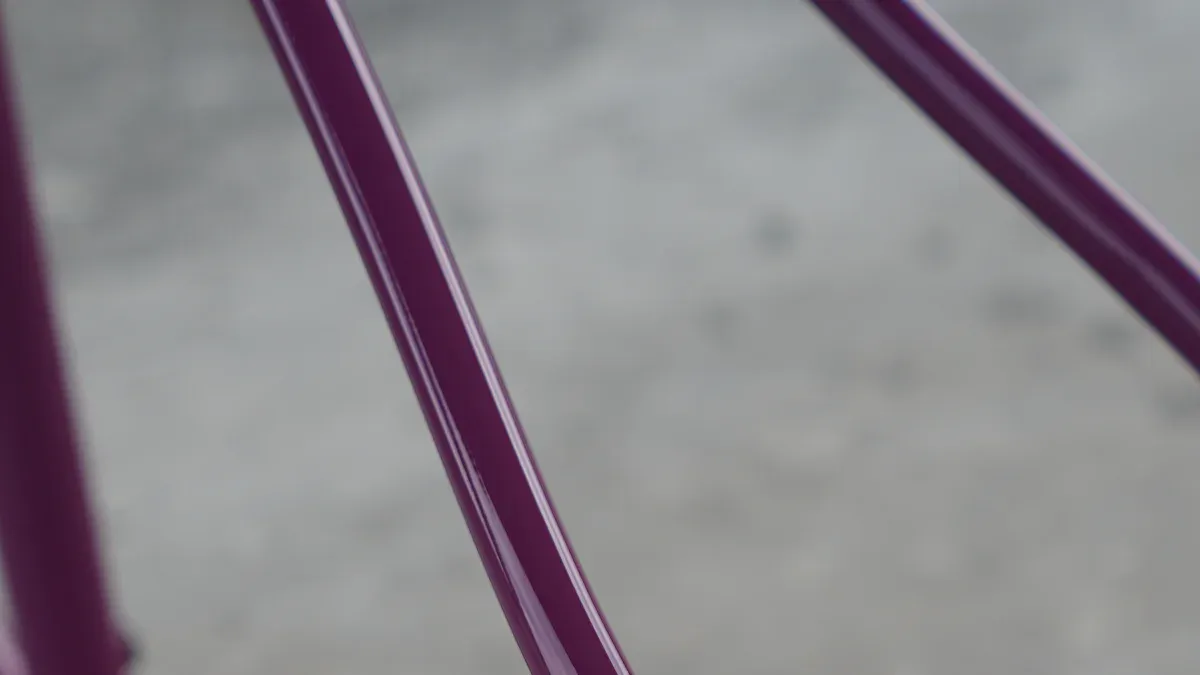
Titanium tubing for bike frames is special because of its great features. It has a unique mix of being light and strong. This makes it a favorite for serious cyclists. When choosing the right tubing, think about these important points:
Weight: Lighter frames help you ride better.
Durability: Strong materials last longer and save money.
Corrosion resistance: Works well in different weather.
Comfort: The natural bend helps reduce bumps, making rides smoother.
By knowing these points, you can make smart choices for your biking needs.
Key Takeaways
Titanium tubing is strong and light. This makes it perfect for fast bike frames.
Picking the right tube size and thickness can improve your bike’s speed and comfort.
Titanium does not rust. This means it lasts a long time, even in bad weather. It is a smart choice for the future.
Different types of titanium, like Grade 5 and Grade 9, have special advantages for bike design and performance.
Taking care of your bike, like cleaning and checking it, keeps your titanium frame in great shape for many years.
Titanium Properties

Strength and Weight
When thinking about bike frames, strength and weight matter a lot. Titanium has a great mix of these two features. Titanium alloys are about half as strong as steel, but they are also half as heavy. This means you can have a light frame that is still strong.
Here’s a quick comparison of strength compared to steel:
Material | Strength Compared to Steel |
|---|---|
Titanium | 1/2 |
Aluminum | 1/3 |
Steel | 1 |
This balance makes titanium a favorite for high-end custom bikes. You get the strength needed for good performance while keeping the weight low. This is important for climbing and speeding up.
In terms of weight, titanium is heavier than aluminum but lighter than steel. Specifically, titanium weighs about 280 lb/ft³, while steel weighs 490 lb/ft³ and aluminum weighs 168.5 lb/ft³. This feature helps you build a bike that feels quick and easy to handle.
Corrosion Resistance
Corrosion resistance is another big plus for titanium. It works better than stainless steel and aluminum in tough outdoor conditions. Titanium creates a strong, thick oxide layer that protects it from rust, especially in harsh places like seawater and chemicals.
Tip: If you ride near the coast or deal with chemicals, titanium is your best choice for lasting longer.
Research shows that titanium resists corrosion better than stainless steel and aluminum. For example, stainless steel can get rust in salty areas, while aluminum’s strength can change based on the type used.
Here are some important facts about titanium’s corrosion resistance:
Titanium quickly forms a strong and thick oxide layer, which helps protect it.
Studies show that titanium alloys, like TC4, resist corrosion well in many tough conditions, making them great for bikes.
By picking titanium for your bike frame, you make sure it lasts a long time, even in hard conditions.
Dimensions of Titanium Tubing for Bike Frames
When you choose titanium tubing for your bike frame, dimensions are very important. Two main dimensions to think about are tube diameter and wall thickness. These factors greatly affect how your bike performs and lasts.
Tube Diameter
The diameter of the tubing changes how stiff and smooth your bike frame feels. Here are some key points to remember:
Bigger tube diameters usually mean more stiffness. This stiffness can improve your bike’s performance, especially when climbing or sprinting.
The design and connections of the frame also affect stiffness and ride quality. A good frame design can balance stiffness and comfort for a smooth ride.
Picking the right tube diameter helps you find the right mix of performance and comfort. If you want a stiffer ride for racing, choose larger diameters. But if you like long rides, a smaller diameter may give you more comfort.
Wall Thickness
Wall thickness is another important dimension that affects how strong and well titanium tubing performs. Here’s what you need to know:
Common wall thicknesses for titanium tubing in bike frames are between 0.9mm and 1.2mm. For example, a tube with a diameter of 31.7mm and a wall thickness of 1.2mm bends 31.061mm. In comparison, a 34.9mm diameter with a 0.9mm wall thickness bends 29.922mm.
Thicker walls usually offer more strength but can make the frame heavier. This trade-off is important when you want a light bike that is still strong.
By knowing how wall thickness affects performance, you can make better choices when selecting titanium tubes. Thicker walls may be best for aggressive riding, while thinner walls could work for casual riders wanting a lighter bike.
Types of Titanium Alloys

When you pick titanium tubing for your bike frame, knowing the different titanium alloys is very important. Each alloy has special features that can change how well your bike performs, its weight, and how long it lasts.
Grade 9 vs. Grade 5
Grade 5 titanium, called 6Al-4V, is one of the most used types. It is very strong but hard to shape. On the other hand, Grade 9 titanium, or 3Al-2.5V, is easier to shape. This means you can make it into more complex designs. This is important for bike frames that need special shapes and butting.
Here’s a quick comparison of their features:
Property | Grade 5 Titanium (6Al-4V) | Grade 9 Titanium (3Al-2.5V) |
|---|---|---|
Strength | Higher strength | Moderate strength, easier to shape |
Formability | Harder to shape | Easier to shape, can be cold worked |
Toughness | Moderate | Better toughness, good for complex shapes |
Weight | Heavier | Lighter, good for bike frames |
Grade 9 titanium is especially liked in high-performance cycling. It is more flexible, which makes it easier to work with, especially when cold working. This helps create unique designs that can make your bike perform better.
Common Alloys: 3/2.5 and CP
Another common alloy is 3/2.5 titanium. It has 3% aluminum and 2.5% vanadium. This alloy has a minimum strength of 105 ksi and is great for bike frames. Its elongation after being heated ranges from 15% to 30%, making it good for many cycling uses.
On the other hand, commercially pure (CP) titanium is not mixed with anything else. It has a strength that ranges from 25 to 65 ksi. While it may not be as strong as the alloys, it is very good at resisting corrosion. You might see CP titanium used in bonded bike frames, where it needs to last against tough weather.
By knowing these titanium grades and alloys, you can make smart choices that improve your biking experience.
Compatibility with Bike Designs
When you pick titanium tubing for your bike frame, think about how it affects the design and performance. The shape of your bike is very important for how it rides and feels.
Frame Geometry
The shape of a bike frame changes how it responds and how comfortable it is. Using swaged tubing lets builders change the diameter slowly along the tube. This helps them adjust stiffness and comfort in different parts of the frame. Such changes make the bike more responsive and comfortable.
Making titanium requires careful methods because it is hard. This can limit the shapes available, but it helps keep the frame strong. Common shapes for performance and endurance bikes include:
Litespeed Arenberg: Made for long rides, this bike is comfortable.
Enigma Etape: Has a special butted titanium tube set, balancing stiffness and comfort for different sizes.
Riding Style Considerations
Your riding style greatly affects which titanium tubing you choose. Different styles like racing, touring, and mountain biking need specific frame features. Here are some important points to think about:
Responsive Ride Quality: Riders like how titanium frames respond, which improves performance on different terrains.
Versatility: The Litespeed Pinhoti III is made for many uses, good for racing, bikepacking, and tough trails.
Comfort on Rough Surfaces: Titanium’s low modulus of elasticity gives a comfy ride on bumpy paths, perfect for off-road cycling.
By knowing how titanium tubing impacts bike design and performance, you can make smart choices that fit your riding style. Whether you want speed, comfort, or durability, choosing the right tubing will improve your biking experience.
Maintenance Tips for Titanium Tubing
Taking care of your titanium bike frame is very important. It helps it last longer and work better. Here are some easy cleaning tips and inspection advice to keep your titanium tubing in great condition.
Cleaning Techniques
To make your titanium bike frame look nice, use these cleaning methods:
Use warm water and soap to clean it first. Pay attention to seams and welds because they get dirty.
Polish the bike after it dries. Use a gray 7448 Scotch Brite pad for light scratches and a maroon 7447 for deeper scratches. Rub in the direction opposite to the grain for the best results.
Rinse well and dry with a microfiber cloth to prevent leftover soap. This step stops water spots and keeps your frame shiny.
Apply protectants like Lemon Pledge Furniture Polish or Silca products for a better finish. This extra layer helps keep dirt away.
Tip: Clean your bike right after trail riding. For road bikes, try to clean at least once a month. If you ride in humid or salty places, wipe down the frame every week.
Inspection and Repair
Checking your bike regularly can help you find problems early. Here’s what to check:
Look for dents and cracks often, especially after washing. Dents are rare but can happen. Check their size and where they are.
Inspect welds on the Head Tube and Top Tube with a flashlight. Look for tiny cracks, especially at weld spots, as they are common in titanium frames.
Check the chainstay for wear and look at the welds connecting it to the frame.
If you see a dent or crack, talk to a skilled welder who knows how to fix titanium. Repairing titanium frames can be hard and expensive, so find someone who is experienced.
Repair Method | Description | Effectiveness |
|---|---|---|
Heat the damaged area and use a mandrel to push the dent out. | Can work if done right, but needs skill. | |
Welding | Needs special welding methods because of titanium’s properties. | How well it works depends on the welder’s skill. |
By following these maintenance tips, you can worry less about long-term costs and durability. Keeping your titanium bike frame clean and checked helps it perform well for many years.
In short, picking titanium tubing for your bike frame has many benefits. You get a great strength-to-weight ratio. This improves ride quality while keeping it strong. The butting method helps balance stiffness and comfort. This leads to lighter frames that work well. Even though titanium frames can be more expensive, they last longer and are easy to fix. This makes them a smart choice for serious cyclists.
When choosing titanium tubing, think about Grade 9 for comfort or Grade 5 for better performance. By making good choices, you can improve your cycling experience and enjoy a well-made titanium bike frame.
FAQ
What are the benefits of using titanium tubing for bike frames?
Titanium tubing for bike frames is strong and light. It also resists rust well and gives a comfy ride. These traits make it great for serious cyclists who want a bike that lasts and performs well.
How does titanium compare to aluminum and steel?
Titanium is lighter than steel and stronger than aluminum. It also resists rust better than both materials. This makes it a top choice for building custom bikes that last a long time.
Can I customize my titanium bicycle frame?
Yes! You can change your titanium bicycle frame to match your riding style. Many makers let you choose the shape, tube size, and wall thickness. This helps you create a bike just for you.
How do I maintain my titanium bike frame?
To keep your titanium bike frame in good shape, clean it often with warm soapy water. Check for dents or cracks, especially at the welds. Use a microfiber cloth to dry it and put on protectants to keep it looking nice.
Is titanium tubing more expensive than other materials?
Yes, titanium tubing usually costs more than aluminum or steel. But its strength and long life can save you money later. This makes it a smart choice for serious cyclists.
See Also
Discover Why Titanium Bike Frames Stand Out Today
Exploring the Innovations in Carbon Fiber Bike Frames
Key Tools and Supplies for Crafting Your Bike Frame
